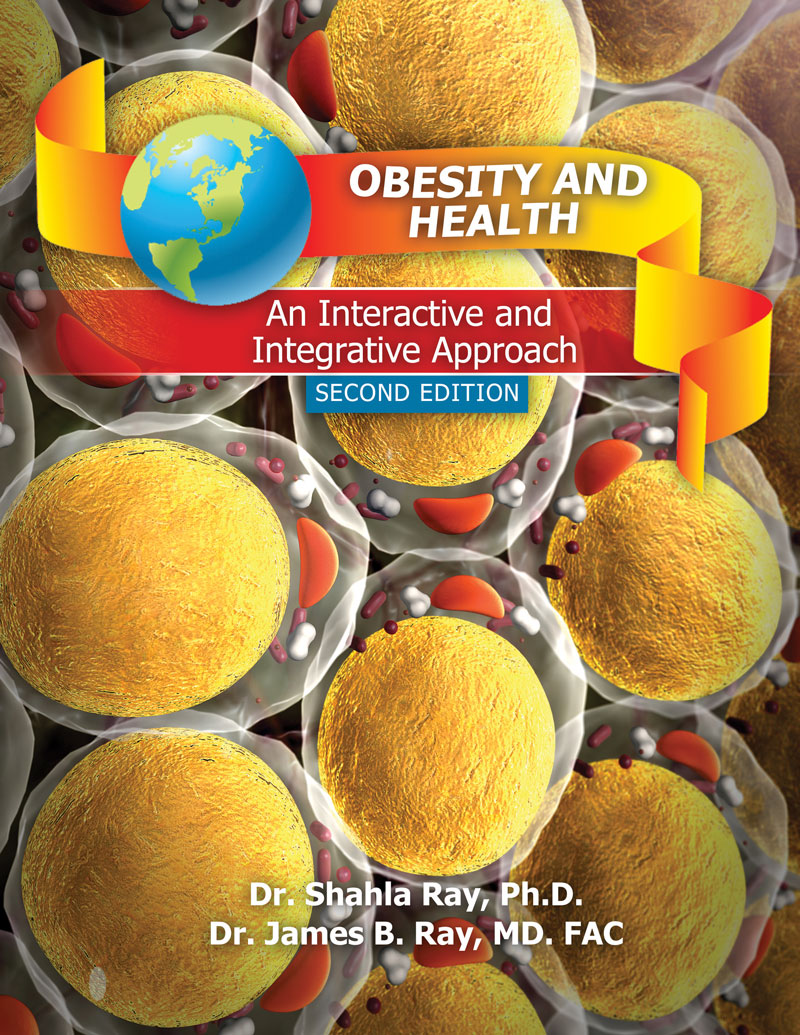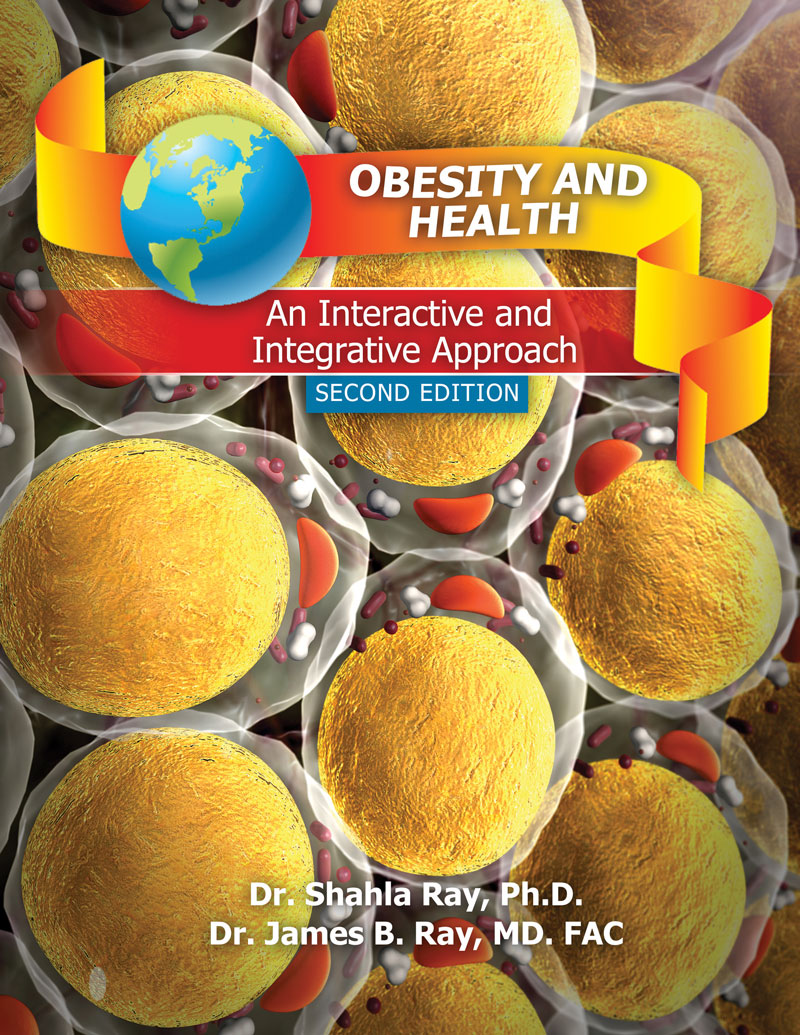Obesity and Health: An Interactive and Integrative Approach
Author(s): Shahla Ray , James Bradley Ray
Edition: 2
Copyright: 2016
Pages: 338
Obesity and related conditions are scientifically associated with the leading causes of premature death and disability in the U.S. including: heart disease, stroke, certain types of cancer, and type 2 diabetes.
Obesity and Health: An Interactive and Integrative Approach addresses the growing health problem of obesity from the individual perspective of understanding factors and behaviors that influence body weight and health as well as from the broader public health professionals’ perspective. This book includes information related to the prevalence, health risks, assessment, etiology, prevention and treatment of overweight and obesity in both adults and children.
Other relevant topics including nutrition, metabolic factors and physical activity are presented. There are interactive exercises at the end of the chapters helping the readers grasp the concepts in depth.
Obesity and Health: An Interactive and Integrative Approach is appropriate for students as prospective professionals in various disciplines that may work with obese or at risk clients or are interested in being involved in obesity prevention and/or treatment programs. Such professionals include: dieticians, physicians, nurses, fitness specialist, physical and occupational therapists; health care providers; teachers; public health, physical health and recreational educators; psychologists and social workers.
Chapter 1: Health, Lifestyle, and Life Expectancy
Chapter 2: Prevalence of Overweight and Obesity: An Introduction
Chapter 3: Evaluation and Classification of Body Weight in Adults: Body Fat Assessment Methods
Chapter 4: Health Consequences of Obesity
Chapter 5: Obesity and Cardiovascular Disease: Obesity as a Well-known Risk Factor for Cardiovascular Disease
Chapter 6: Etiology of Obesity: Metabolic and Environmental Factors, Genetic Causes, and More
Chapter 7: Basic Understanding of Nutrition
Chapter 8: Planning a Healthy Diet for Weight Control
Chapter 9: Physical Activity and Body Adaptations
Chapter 10: Treatment of Obesity: Behavioral, Herbal, Pharmaceutical, and Surgical Approaches
Chapter 11: Childhood Obesity
Dr. Shahla Ray, the primary author of this book, received her masters and doctorate degrees in the field of Biochemistry and her undergraduate degree in Chemistry. She completed her postdoctoral research at Indiana University, Medical Sciences program. Her graduate and post doctorate research were related to human diseases. As a college professor at Indiana University she taught Nutrition and Health classes in the Department of Applied Health Science, School of Public Health since 2003. Realizing the need to acknowledge the obesity epidemic, to learn about this disease and to prevent and treat it in this obesogenic environment, she developed an undergraduate course related to obesity and taught it since 2006. She also co-developed a course related to the biochemical adaptations to exercise and as well as service learning courses offered in the fields of obesity and nutrition. Her current research interests are in the field of obesity, nutrition and eating behavior. She has been especially active in obesity research and has presented her research at major international conferences. In 2016, she developed a cross campus minor entitled Obesity and Health at Indiana University. This minor is offered to many students from different majors and backgrounds.
Dr. James B. Ray, MD has been practicing bariatric surgery since 2004. He has an active interest in improving public health and has made many efforts to treat obesity. He contributed to the development of the undergraduate course related to obesity and the publication of this book. He has researched obesity treatment and presented his research findings in international meetings. He is currently the Director of Bariatric Surgery at Blount Memorial Hospital in Tennessee.
Obesity and related conditions are scientifically associated with the leading causes of premature death and disability in the U.S. including: heart disease, stroke, certain types of cancer, and type 2 diabetes.
Obesity and Health: An Interactive and Integrative Approach addresses the growing health problem of obesity from the individual perspective of understanding factors and behaviors that influence body weight and health as well as from the broader public health professionals’ perspective. This book includes information related to the prevalence, health risks, assessment, etiology, prevention and treatment of overweight and obesity in both adults and children.
Other relevant topics including nutrition, metabolic factors and physical activity are presented. There are interactive exercises at the end of the chapters helping the readers grasp the concepts in depth.
Obesity and Health: An Interactive and Integrative Approach is appropriate for students as prospective professionals in various disciplines that may work with obese or at risk clients or are interested in being involved in obesity prevention and/or treatment programs. Such professionals include: dieticians, physicians, nurses, fitness specialist, physical and occupational therapists; health care providers; teachers; public health, physical health and recreational educators; psychologists and social workers.
Chapter 1: Health, Lifestyle, and Life Expectancy
Chapter 2: Prevalence of Overweight and Obesity: An Introduction
Chapter 3: Evaluation and Classification of Body Weight in Adults: Body Fat Assessment Methods
Chapter 4: Health Consequences of Obesity
Chapter 5: Obesity and Cardiovascular Disease: Obesity as a Well-known Risk Factor for Cardiovascular Disease
Chapter 6: Etiology of Obesity: Metabolic and Environmental Factors, Genetic Causes, and More
Chapter 7: Basic Understanding of Nutrition
Chapter 8: Planning a Healthy Diet for Weight Control
Chapter 9: Physical Activity and Body Adaptations
Chapter 10: Treatment of Obesity: Behavioral, Herbal, Pharmaceutical, and Surgical Approaches
Chapter 11: Childhood Obesity
Dr. Shahla Ray, the primary author of this book, received her masters and doctorate degrees in the field of Biochemistry and her undergraduate degree in Chemistry. She completed her postdoctoral research at Indiana University, Medical Sciences program. Her graduate and post doctorate research were related to human diseases. As a college professor at Indiana University she taught Nutrition and Health classes in the Department of Applied Health Science, School of Public Health since 2003. Realizing the need to acknowledge the obesity epidemic, to learn about this disease and to prevent and treat it in this obesogenic environment, she developed an undergraduate course related to obesity and taught it since 2006. She also co-developed a course related to the biochemical adaptations to exercise and as well as service learning courses offered in the fields of obesity and nutrition. Her current research interests are in the field of obesity, nutrition and eating behavior. She has been especially active in obesity research and has presented her research at major international conferences. In 2016, she developed a cross campus minor entitled Obesity and Health at Indiana University. This minor is offered to many students from different majors and backgrounds.
Dr. James B. Ray, MD has been practicing bariatric surgery since 2004. He has an active interest in improving public health and has made many efforts to treat obesity. He contributed to the development of the undergraduate course related to obesity and the publication of this book. He has researched obesity treatment and presented his research findings in international meetings. He is currently the Director of Bariatric Surgery at Blount Memorial Hospital in Tennessee.

